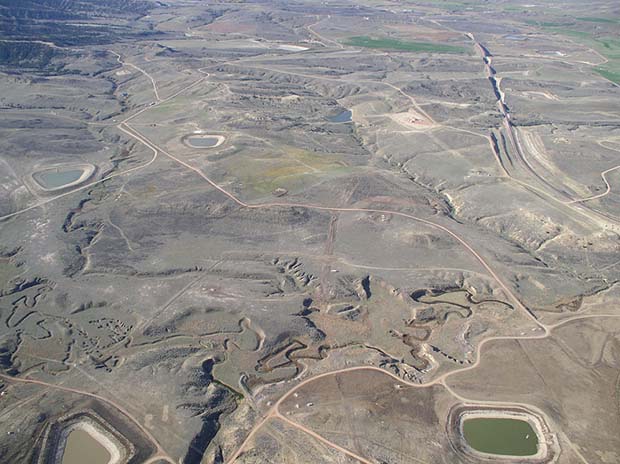

|
Diagram of possible coalbed methane wells
in southeastern Montana An issue that has created a lot of controversy in Montana recently is the possible removal of coalbed methane gas from layers of coal beneath the eastern part of the state . On the one hand, the methane could provide a substantial amount of energy for heating homes and water. On the other hand, the removal of the methane requires that significant quantities of groundwater be pumped to the surface.
Understanding coalbed methane . .
.
So what's all the fuss about? . . . Another possibility, direct stream discharge won't work either because of the adverse affect that the salts would have on the quality of water in the streams. In fact, earlier this month (October 2003), the U.S. Supreme Court declined to review an appeals court ruling that determined "water released from coalbed methane wells is a pollutant under the federal Clean Water Act". The decision is significant because it establishes that coalbed methane water is a pollutant and subject to regulation.
A third option is to construct ponds in which the water would be stored. There are several terms for these impoundments: "holding ponds" "zero discharge ponds" or "infiltration ponds." Although they do not directly discharge water on the land surface, most impoundments are not lined and discharge to the subsurface. In addition, seepage flow from impoundments is likely to reach some stream channels via subsurface flow.
More about coalbed methane . . . Right: This map shows the Powder River Basin of Montana and Wyoming where coalbed methane gas is most likely to be taken from the ground. The map was designed by John Potter of the Billings Gazette. His source was the Montana Bureau of Mines & Geology and CMS Energy Oil and Gas. Below: This arial photo taken near Sheridan, Wyoming, illustrates another concern related to drilling coalbed methane wells. As roads and evaporation ponds are built, the appearance of the landscape will be changed.

Photo courtesy of Terms: discharge, infiltration |

|
Earth Science Teacher at Helena High School |